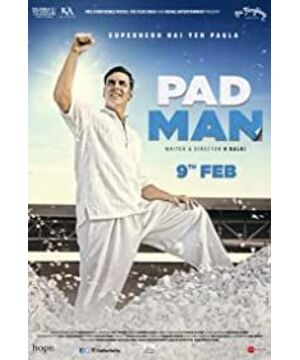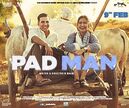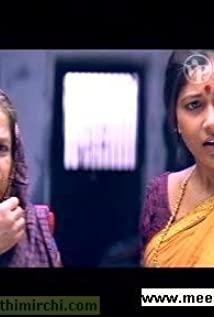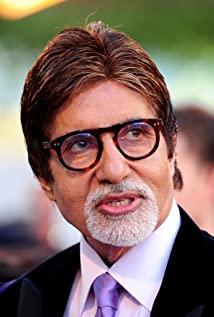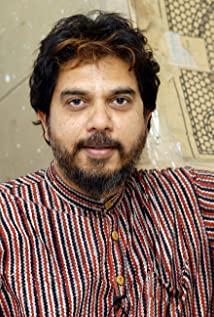Are you entrepreneurial? Are you constantly thinking about creating value and new business models? Or keep thinking about how to improve or reform your business? Are you trying to find creative new ways of doing business to replace outdated ways of doing business?
These are the three questions on the title page of the book New Generation of Business Models. If you choose Yes like me, please read on. Select an episode "Saale Sapane (Damn Dream)" from the movie "Indian Partner" as the BGM of this article. The film "Partners in India" is adapted from the true story of Indian grassroots entrepreneur Muruganantham, and the poster is taken from the scene of the protagonist Pad Man Lakshmi giving a speech at UN Women in New York.
The status of this film in the history of Indian film is the innovation of traditional Bollywood songs and dances with electronic elements, the Indian national business heroes it portrays, and the awakening of the public women's health concept and equality consciousness. It is also a classic.
Let's disassemble this real case with a commercial canvas.
Due to traditional social customs and high national tariffs (India only abolished import tariffs on sanitary napkins in July 2018), more than 80% of women in India were still unable to use sanitary pads during their menstrual period in 2012. This is the background of the times when Pad Man Lakshmi started his business. From a commercial point of view, the product demand ceiling is extremely high, and the product life cycle is in the embryonic stage of the feminine hygiene products industry in the Indian market.
The original intention of starting a business stems from Pad Man's care for his wife's health, so "customer segmentation" is first of all for the wife and the female family members around her. (Before watching this video, many people didn't know that Indian women can't sleep in the house for 5 days during their menstrual period, they can only sleep on the balcony outside.)
After many quick verifications, ordinary cotton finally failed. Pad Man's first "key activity" was the screening and positioning of raw materials. When he was helping a professor in Delhi, he was fortunate to find cotton pads produced in the United States through the Internet; the second "key activity" was based on the production process. Four low-cost production machines with independent patents were designed by dismantling the original complete set of production equipment worth tens of thousands of dollars. This technology democratizes the production cost of pads and constitutes the core resource of Pad Man.
After the product came out, in terms of customer promotion and channels, Pad Man met Parry, the best partner. The sale of pads among women is the best sales channel, and it was soon rolled out in a village, and the business unit was successfully verified.
Pad Man's pads are priced at only 2 rupees each. At the same time, production training is organized to initially form a self-produced and self-sold industrial chain of female sanitary pads. From the perspective of a single business model, key indicators such as revenue, cost, market, and customers are all perfect.
In the growth stage, negotiate with banks to use machines to mortgage the innovative model of small loans to villagers, helping one village after another to get rid of ignorance and poverty.
How to judge whether a business model is successful? The mainstream view is: first, whether to make money, second, whether it can continue to make money, and third, whether it can continue to make big money.
But what I see from Pad Man is more of a sense of social responsibility, or entrepreneurial spirit. He patented the production of machines that created jobs for thousands of women, empowered them and brought smiles to them.
The “value proposition” is the center of the business canvas and the key to entrepreneurial success.
There is a passage in Pad Man's public speech that is impressive. He said the pads give Indian women two extra months of life each year, because sitting outside the house five days a month can't do anything, five times 12 months is 60 days, and two months a year is wasted.
"The country will be strong when women are strong, mothers are strong, and sisters are strong." Finally, listen to the core "value proposition" on Pad Man's commercial canvas - December 7, 2021 Beijing
【Recommended reading】
[Switzerland] Alexander Osterwalder, The New Generation of Business Models
For those pioneers working to improve or create business models, Business Model Generation is a practical, inspiring tool on business model innovation. Dr. Ostwald is a writer, speaker and mentor in the field of business model innovation. The practical approach he developed with Dr. Yves Pigneur for designing innovative business models has been used by companies around the world in a variety of industries, including 3M, Ericsson, Capgemini, Deloitte , Telenor, etc.
【United States】Tim Clark / 【Switzerland】Alexander Ostwald / 【Belgium】Yves Pineux
"New Generation of Business Models (Individual)"
The one-page solutions presented in this book have helped thousands of individuals around the world innovate their business models. It can effectively eliminate professional uncertainty and bring you great confidence; it optimizes the most important business model in a systematic way and realizes the customization of personal business model.
—— END ——
View more about Pad Man reviews


